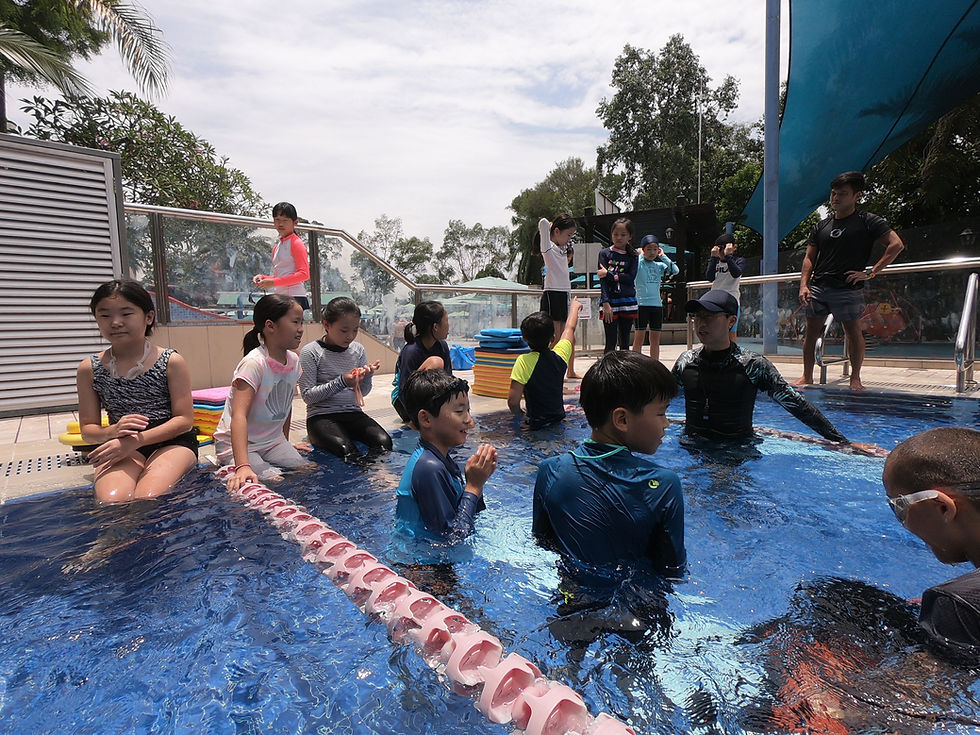The Best Way to Teach Breath Control to Babies
- SG Sink Or Swim

- Jun 30
- 3 min read

Introducing babies to water early in life can be an incredible foundation for safety, comfort, and future swimming skills. One of the most important — and often misunderstood — aspects of infant swim instruction is breath control. Teaching babies how to safely manage their breathing in the water is essential for water safety and lays the groundwork for confident swimmers later on.
In this article, we’ll explore how to teach breath control to babies in a safe, fun, and developmentally appropriate way.
🧠 Why Breath Control Matters for Babies
Breath control helps babies:
Safely submerge and return to the surface
Build trust and comfort in water
Develop the foundation for stroke breathing later on
Reduce the risk of panic in water-related situations
While babies are born with a natural reflex to hold their breath underwater (the bradycardic response), this reflex fades after a few months — making gentle, guided breath training all the more important.
✅ Key Principles for Teaching Breath Control
1. Make It a Gradual Process
Never rush submersion or breath training.
Start with face splashes and water trickles.
Use songs and cues to build anticipation and comfort.
2. Use Verbal and Visual Cues
Babies thrive on routine and predictability.
Say a cue word or phrase, such as “Ready…go!”, before pouring water over the face or initiating submersion.
Always use the same cue so they associate it with holding their breath.
3. Start with Face-Wetting Techniques
Gently trickle water on the baby’s face using your hand or a cup.
Watch for calm or positive reactions before progressing.
Gradually increase the amount of water as they get comfortable.
4. Progress to Submersion with Cues
Once babies are comfortable with water on the face:
Hold baby securely and say your cue (“Ready…go!”).
Briefly dip baby under water (just for a second) in a forward, sweeping motion.
Lift baby with eye contact, smiles, and encouragement.
✅ Never submerge a baby without warning or before they are developmentally ready.
5. Repeat in Short, Fun Sessions
Keep sessions short — 20 to 30 minutes is plenty.
Make water play enjoyable with toys, songs, and games.
End each session on a positive note, even if progress is small.
🛑 Safety Do’s and Don’ts
✅ Do:
Always supervise — within arm’s reach.
Make it playful, not stressful.
Watch baby’s facial expressions and reactions.
Use a certified infant swim instructor if unsure.
❌ Don’t:
Force submersion or breath holding.
Skip verbal cues or rush progression.
Treat water skills as a race — every baby develops at their own pace.
🏊 Suggested Breath Control Activities
🧸 Water Pour Game:
Sit in shallow water and pour water over the baby’s chest, then shoulders, then head.
Use “Ready…go!” before each pour.
🫧 Bubble Blowing:
Blow bubbles with your baby to show how to exhale.
Eventually, some babies will mimic and blow bubbles too.
🧼 Mirror Splash:
Splash together in front of a mirror so baby sees the fun and gets used to face splashes.
🧠 Signs Your Baby Is Ready for Submersion
Comfortable with water being poured over face
No fear or distress during previous water sessions
Reacts positively to cues and routines
Has developed enough head and neck control (usually 4–6 months and older)
🏁 Final Thoughts
Teaching breath control to babies is not just about future swim skills — it’s about creating trust, safety, and comfort in the water from the very beginning. With patience, consistency, and a playful approach, you’ll give your child a gift that could one day save their life — and certainly make them more confident in and around water.





Comments